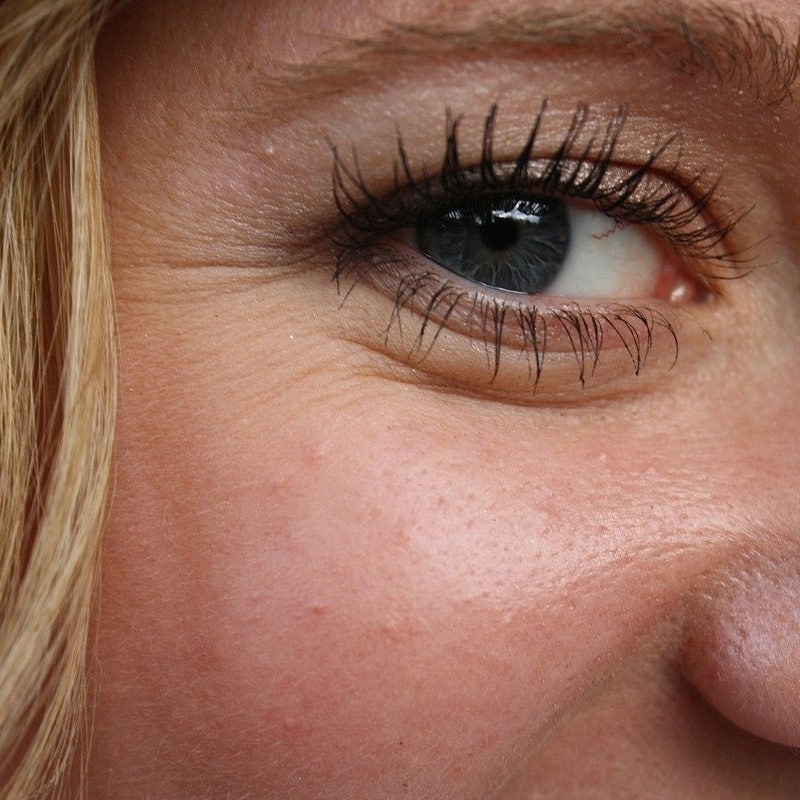
Sometimes you just need a little lift! Me too. Surgical procedures used to be the best way you could smooth out those lines and wrinkles.
But who wants to have surgery? That’s why I am thrilled with the advances made in the world of non-invasive dermal fillers.
There is now a wide variety of dermal fillers that are:
- FDA approved
- Easily accessible
- Long-lasting
- Designed for subtlety
You’ve probably heard many of their brand names, but you may not understand what they are or how they work. That’s why I’ve created this essential guide on dermal fillers.
It’s a quick reference to fill you in on the amazing possibilities that dermal fillers have to offer.
So What Exactly Is a Dermal Filler?
I’ll start with a basic definition, and we’ll get more in-depth later.
Dermal fillers are substances injected into the skin on your face to smooth out lines and wrinkles and plump up lips and cheeks. They are not permanent.
What Can You Use Dermal Fillers For?
Dermal fillers do their best work at plumping, smoothing, and enhancing.
- Have lines around your nose and mouth?
- Sunken cheeks?
- Vertical lip lines?
- Thin or saggy lips?
- Chin creases?
- Uneven facial features?
Dermal fillers can take care of all of these issues and more. But not every filler is used to treat every concern. And they don’t all last the same length of time.
That’s why it is important to understand what each dermal filler is made out of and put it to its best use.
What’s in a Filler?
Fillers fall into five basic categories. These categories are based on what makes up the filler, its base. The most used bases of filler are:
- Hyaluronic Acid (HA)
- Calcium Hydroxylapatite (CaHA)
- Poly-L-lactic Acid
- Polymethylmethacrylate (PMMA)
- Autologous fat injections (facial fat grafting)
Now for the specifics of each filler category
Hyaluronic Acid (HA)
Hyaluronic acid is one of the most popular filler bases at the moment. I really like HA fillers because they are made up of a natural substance that already exists in your skin, and they are a soft filler that gives you a natural look.
HA’s job in the body is to keep the skin plump and hydrated, so it’s a perfect base for a filler. HA fillers last about 6 to 12 months before they are naturally absorbed.
These fillers usually contain lidocaine to keep treatment discomfort to a minimum. You may recognize the brand names of HA fillers:
- Juvéderm
- Restylane
- Belotero Balance
Calcium Hydroxylapatite (CaHA)
Calcium hydroxylapatite also occurs naturally in the body. You mainly find it in the bones. This filler is made up of nearly microscopic calcium particles suspended in a smooth gel.
A CaHA filler is a little bit different than an HA filler because it is thicker, and it usually lasts a full 12 months.
CaHA is great for smoothing out deeper lines and wrinkles. It also helps stimulate natural collagen production. You may recognize this CaHA filler, Radiesse®.
Poly-L-Lactic Acid
Poly-L-lactic acid does not naturally occur in the body. It is a synthetic substance that is biocompatible (safe to use in the body) and biodegradable. Poly-L-lactic Acids shine in the treatment of deeper facial wrinkles.
They can also help your skin rebuild collagen, which will smooth out fine lines and plump you up. Although the filler gel generally dissolves within a few days, the results can last more than two years. Sculptra® Aesthetic is an FDA approved brand of Poly-L-lactic acid fillers.
Polymethylmethacrylate (PMMA)
Polymethylmethacrylate (PMMA) is another synthetic, biocompatible substance that looks like tiny balls. These balls are not biodegradable, so they will be with you forever.
Collagen is combined with the PMMA to provide additional structure and firmness. Bellafill® (aka Artefill) is a well-known PMMA filler.
Autologous Fat Injections (Facial Fat Grafting)
This is the only filler on the list that requires surgery. Fat injections use your own fat to plump up cheeks, temples, and lower eyelids. Your fat is harvested from another part of your body, purified, and then injected into your face.
Results are relatively long term, lasting for many years. A board-certified cosmetic surgeon should perform fat injections.
This Is Important!
If you want the best results, go to the best provider. Find an experienced medical provider who understands facial anatomy, appreciates aesthetics, and has top-notch skills.
They should also be trained and have experience in the specific treatment that you want. They should also let you look at a portfolio of before/after photos of other patients who have received these treatments.
Fillers Can Be Costly but Worth It
Expect to pay anywhere from $650 to $2000 depending on the treatment. Don’t fall for deep price cut deals.
I know you may want to save the money, but using a counterfeit or diluted filler won’t get you the results you want and could even be harmful.
Sometimes It’s Better to Wait to Get a Filler
I know you just can’t wait to get those lips and cheeks plumped up, but there are times when it’s best to hold off.
Just say no to fillers if:
- You are pregnant or breastfeeding.
- Sick with a sinus infection.
- Have an infection on or near your face that could spread to the injection site.
- It has been less than two weeks before or after a dental treatment.
- It has been less than two weeks before or after a tattoo or permanent make-up appointment.
As you can tell, I know and love fillers! I hope this guide was helpful to you. If you are still confused or overwhelmed, never fear! That’s why my team at Silhouette Health and I are here. Come in and have a chat.
Tells us what your expectations and desires are, and we will look at your facial features and your skin to determine what treatment plan would be best for you!
